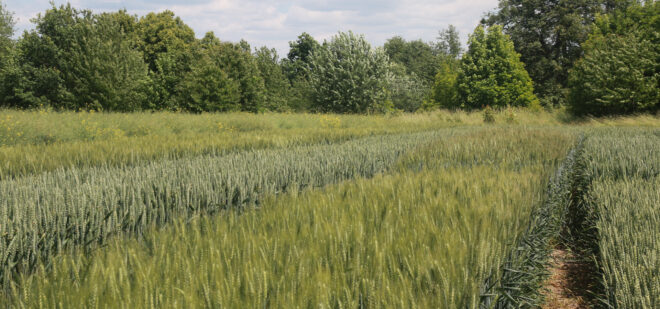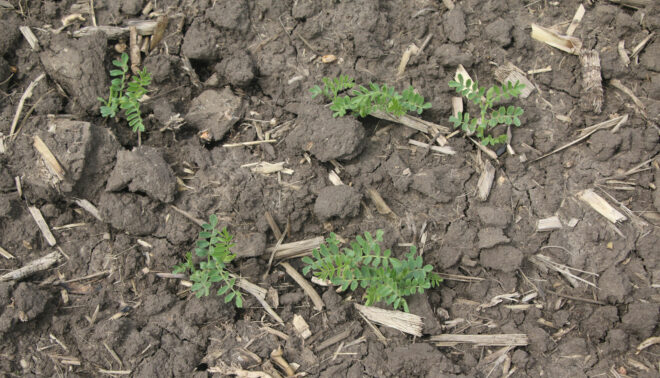Farmers are constantly looking for new technologies and approaches to reduce production costs, increase yields and promote soil fertility. According to soil scientists, we have lost 0.1% of humus in the past decade, mainly due to intensive and sometimes improper use of agricultural land.
Reducing soil compaction

Wassili Pensai knows: A farm that does not adopt the best available practices will not properly function.
Looking for new ideas, Kees Chudincha, head of the agricultural enterprise ”Kischtschenzi” in the Cherkassy region, together with his colleagues, has visited numerous farms in different countries. In the Czech Republic, he learned about using tramlines for controlled traffic farming and decided to introduce this technology to his business. ”At that time nobody in Ukraine had heard about using this method here,” recalls the farm manager, Wassili Pensai.
The method reduces soil compaction. The harmful effect of machinery wheelings can go a full meter deep into the soil, and up to a meter in width, explains Mr Pensai. Such compaction stays over the season and gets worse year after year, causing soil erosion and the loss of humus, the organic carbon in the soil.
Controlled traffic farming
All machines on the farm are equipped with a GPS system which allows them to move along the same tramline season after season and pass after pass. In addition, the use of wider, low-pressure tyres, reduces ground damage during fieldwork.
The farm has used this method over the past four years. Over that time, the ‘eternal’ tramlines have become almost ordinary roads which can be used even after rainfall without any problem. It does not matter what they are used for: Soil cultivation, sowing or spraying; all ‘eternal’ tramlines have a 36m spread.
Small shortcomings
However, controlled traffic farming has, like everything else, advantages and disadvantages. ”Our main tramlines are 36m apart, but we also use seed drills and cultivators with a working width of only 12 meters,” explains Mr Pensai. ”Besides the main tramline we have additional tracks, which have been compacted over the years, but less so. We are seeing small surface subsidence damage and are thinking about loosening the soil in these areas.”
It’s also not only about equipping machines with GPS technology: The wheelbase is important as well. A wider wheelbase means less pressure to the ground. ”Right at the start, we opted for a 3m distance between the wheels. This is exactly the width of our tramlines,” explains the head farmer.
Advantages of controlled traffic farming
In un-trafficked field areas the soil quality is but steadily improving. ”Soil compaction in these areas will soon disappear as it is hardly impacted any more. Soil fertility is increasing,” explains Mr Pensai. “Another interesting observation: The less the soil is touched, the faster its microflora recovers.”
The farm is now conducting soil analyses on an annual basis, with the samples analysed by a laboratory in Germany. Additional parameters are observed as well: More even water distribution through the soil profile, better soil structure, improved germination and, most importantly, more stable crop yields.
These results confirm that we are on the right track: The quality of our black earth is constantly improving.
Wassili Pensai
”These results confirm that we are on the right track: The quality of our black earth is constantly improving,” says Mr Pensai. ”After four years of controlled traffic farming, yields start to increase gradually, while tillage costs are down by about 15-20%.”
A link in the chain
Controlled traffic farming at ”Kischtschenzi“ farm is just one link in bigger overarching chain: Ploughs have not been used for a very long time. ”In the past we simply did not have the money for ploughing,” admits Mr Pensai. ”But more recently we consciously decided to try farming without ploughing. Some things worked, some didn’t. With this attitude, we inevitably ended up with reduced tillage, which we are still practicing today.”
If one compares traditional cultivation methods with reduced tillage and direct seeding, it turns out that yields are higher and production costs significantly lower with the latter, he says. In addition, the farmer leaves harvest residues on the field so that they decompose. This increases fertility and prevents the soil drying out.

The landscape around the farm looks different today.
”With today’s climate you don’t know what to expect,” complains Mr Pensai. ”But we can be pretty sure that there will be less humidity and higher temperatures at the same time. Therefore, maintaining the soil moisture is one of our main tasks.” Application of organic fertilisers increases soil fertility and water retention capacity as well. However, this option is only available to livestock farms. ”’Last year we decided to grow green manures so that the soil is covered all the time,” explains Mr Pensai. “We not only increased the biomass, but also the amount of water stored in the soil.”
In total ”Kischtschenzi” has more than 15,000ha and the same picture can be observed everywhere: Mulch, reduced tillage and ‘eternal’ tramlines. Even if the neighbours were sceptical in the beginning, the landscape looks different today. Other farms in the surrounding area started experimenting with elements of gentle farming and now those farmers are paying more attention to the preservation of their soils.
The Farmers´s View
“Controlled traffic farming requires reduced tillage and no ploughing: You have to accept this before you start. The fields no longer look black, they are covered with plants all year round. Some say that we are lazy farmers and do not want to cultivate our fields properly. But our results confirm that we are on the right track: The quality of our black earth is continuously improving.”



